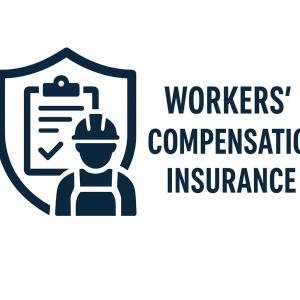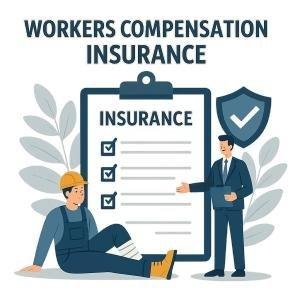
Workers’ Comp Coverage Checklist—GA Industrial Staffing
August 30, 2025
Umbrella Coverage & Workers Comp: Plugging Liability Gaps
August 30, 2025In today’s dynamic labor market,managing the cost of workers’ compensation remains a critical concern for businesses leveraging staffing services. as organizations increasingly rely on contingent and temporary workforce solutions, understanding the financial implications of workers’ comp coverage within staffing arrangements is essential for effective risk management and budget optimization. This analysis delves into the key factors driving workers’ compensation costs in the staffing industry, examines industry benchmarks, and explores strategic approaches to mitigate expenses while ensuring compliance and employee protection.By gaining insight into these elements, buisness leaders can make informed decisions that balance operational efficiency with fiscal responsibility.
table of Contents
- Cost Drivers Impacting Workers’ Compensation Expenses in Staffing Services
- Analyzing Industry Benchmarks for Workers’ Compensation Costs
- Strategies for Reducing workers’ Compensation Liabilities effectively
- Implementing Best Practices to Optimize Workers’ Compensation Management
- Q&A
- The Way Forward
Cost Drivers Impacting Workers’ Compensation Expenses in Staffing Services
Several pivotal factors contribute to the volatility and scale of workers’ compensation costs within the staffing services sector. Industry risk classification plays a fundamental role, as different job placements carry varying degrees of hazard, directly affecting insurance premiums. For instance, staffing services specializing in construction or manufacturing inherently face higher premiums compared to administrative or clerical placements. Additionally, the frequency and severity of workplace injuries impact overall expenditures; firms with a history of frequent claims or severe injuries typically encounter increased costs due to higher claim payouts and elevated insurer risk assessments.
Beyond job-specific risks, operational elements considerably influence expenses. Staff turnover rates, for example, lead to increased training and on-boarding costs, which may inadvertently elevate incident rates due to less experienced workers unfamiliar with safety protocols. Moreover, a company’s return-to-work programs and safety initiatives can mitigate costly claims by promoting early recovery and reducing the duration of lost workdays. The table below illustrates a simplified comparison of cost drivers and their typical impact levels in staffing services:
| Cost driver | Impact Level | Example |
|---|---|---|
| Industry Risk Classification | High | Heavy industry vs. Office roles |
| Injury Frequency & Severity | High | Repeated claims impact premiums |
| Staff Turnover | Medium | Inexperienced hires increase risk |
| Safety Programs | Medium | Effective training reduces claims |
| Return-to-Work Initiatives | Medium | Faster recovery lowers costs |
Analyzing Industry Benchmarks for Workers’ Compensation Costs
Understanding the competitive landscape requires a deep dive into industry benchmarks to accurately gauge workers’ compensation expenses. Staffing services companies often encounter a wide range of rates depending on factors such as location, employee classification, and claim history. Employers can leverage benchmark data to identify whether their costs align with market trends or if adjustments are necessary to maintain fiscal efficiency. Recognizing these variations helps in negotiating premiums and tailoring safety programs that reduce risk and, consequently, claims.
Key elements influencing industry standard costs include:
- Employee Job Classification: Risk varies greatly between administrative roles and field workers.
- Claims Frequency: Higher frequency typically signals increased premiums.
- State regulations: Workers’ comp laws vary and impact cost structures.
- Experience Modifier Rate (EMR): Reflects company-specific loss history compared to industry peers.
| Industry Segment | Average Workers’ Comp Cost (%) | EMR Range |
|---|---|---|
| Light Industrial Staffing | 3.2% | 0.85 – 1.15 |
| healthcare Staffing | 4.5% | 1.0 – 1.25 |
| IT & Professional Services | 1.1% | 0.75 - 1.05 |
Strategies for Reducing workers’ Compensation Liabilities Effectively
Effectively managing workers’ compensation liabilities hinges on proactive risk prevention and efficient claims handling. Employers should implement complete safety training programs tailored to the specific hazards of their industry. This approach not only reduces workplace injuries but also signals a commitment to employee well-being, which can positively influence insurance premiums. Additionally, establishing a clear, streamlined dialog process for reporting injuries ensures that claims are addressed promptly, minimizing administrative delays and potential fraud.
Integrating technology and data analytics can also transform liability management by identifying patterns and high-risk scenarios before they escalate. Consider the following strategies to reduce overall exposure:
- Regular safety audits to ensure compliance and identify risk areas
- Employee wellness programs that promote physical health and injury prevention
- Return-to-work initiatives that facilitate modified duties for injured workers
- Contractor screening processes to verify compliance with safety standards
| Strategy | Impact on liability | Estimated Savings |
|---|---|---|
| Safety Training Programs | high | 20-30% |
| Claims Process Optimization | Moderate | 10-15% |
| Return-to-Work Initiatives | High | 25-35% |
| Contractor Compliance Checks | moderate | 10% |
Implementing best Practices to Optimize workers’ Compensation Management
Streamlining claims processing is a critical step toward reducing unnecessary expenses and accelerating recovery times. Implementing digital tools that automate documentation and communication allows staffing services to quickly verify claims and reduce administrative overhead. Coupled with regular training for HR and safety personnel on updated compliance regulations, this proactive approach minimizes the risk of costly errors and ensures timely resolution of workers’ compensation cases.
Equally important is fostering a culture of workplace safety backed by data-driven risk management. by utilizing advanced analytics, companies can identify trends and high-risk areas, then tailor their prevention strategies accordingly. Key practices include:
- Conducting routine safety audits and employee feedback sessions
- Establishing clear return-to-work protocols to reduce lost time
- Collaborating with medical providers for coordinated care plans
These initiatives not only protect employees but significantly lower financial liabilities associated with workers’ compensation claims, making them essential to any staffing services operational strategy.
| Optimization Area | Expected Outcome |
|---|---|
| Claims Automation | 30% Reduction in Processing Time |
| Safety training Programs | 40% Decrease in Injury Rates |
| Return-to-Work Planning | 25% Lower Lost Workdays |
Q&A
Q&A: Cost of Workers’ Comp-Staffing Services Analysis
Q1: What is workers’ compensation and why is it important for staffing services?
A1: Workers’ compensation is a form of insurance providing wage replacement and medical benefits to employees injured in the course of employment. For staffing services, it is crucial because it protects both the temporary workforce and the staffing agency from financial liability, ensuring compliance with legal requirements and maintaining operational continuity.
Q2: How does the cost of workers’ compensation typically impact staffing agencies?
A2: Workers’ comp costs represent a important portion of staffing agencies’ operational expenses. Premiums are generally persistent by factors such as the industry risk classification, the agency’s claims history, payroll size, and safety practices. high costs can reduce profitability, affect pricing strategies, and perhaps limit the agency’s competitive position.
Q3: What factors influence workers’ compensation premiums in the staffing industry?
A3: Several factors influence premiums, including:
- Industry Classification: Higher-risk industries, such as construction or manufacturing, incur higher premiums.
- Claims history: Frequent or severe claims lead to increased rates through experience modification factors.
- Payroll Volume: Premiums are calculated as a percentage of total payroll.
- Safety Programs: Effective safety and return-to-work programs can reduce costs by minimizing claims.
- state Regulations: Workers’ comp laws and rates vary significantly by state.
Q4: How do staffing agencies manage and reduce workers’ compensation costs?
A4: Agencies can adopt several strategies:
- Implement comprehensive safety training to reduce workplace injuries.
- Establish proactive claims management and early intervention.
- Conduct regular risk assessments and partner with clients who maintain safe work environments.
- Leverage experience modification to reward consistent safety performance.
- Negotiate with insurance carriers or consider self-insurance options where feasible.
Q5: What role does technology play in controlling workers’ compensation expenses for staffing firms?
A5: Technology enhances workers’ comp cost control by enabling:
- Real-time tracking and analysis of workplace incidents.
- Automated claims reporting and management systems that improve communication with insurers and healthcare providers.
- Data analytics to identify risk patterns and optimize safety initiatives.
- Efficient payroll integration to ensure accurate premium calculations.
Q6: How can staffing service clients affect workers’ compensation costs?
A6: As staffing firms frequently enough place workers at client sites, the work surroundings and safety culture of the client directly impact injury rates and claims. Clients with poor safety records or hazardous conditions can increase the cost burden on the staffing agency. Collaborating with clients to improve safety standards can therefore mitigate workers’ comp costs.
Q7: Are there industry benchmarks or averages for workers’ comp costs in staffing services?
A7: While costs vary widely based on risk profile and geography, staffing agencies typically pay workers’ comp premiums ranging from 1% to 6% of payroll, depending on the nature of the work. Agencies serving primarily low-risk sectors tend toward the lower end of this range, whereas those placing workers in high-risk environments face higher premiums.
Q8: What future trends may affect the cost of workers’ compensation for staffing agencies?
A8: Emerging trends include:
- Greater regulatory scrutiny and evolving compliance requirements.
- Increased use of data analytics and predictive modeling to prevent injuries.
- Expansion of remote and gig work arrangements,potentially changing risk profiles.
- Rising medical and indemnity costs driving premium increases.
- Enhanced focus on mental health and ergonomic injuries affecting claims management.
This Q&A aims to provide a comprehensive overview of the critical aspects influencing workers’ compensation costs within the staffing services sector, guiding business leaders on managing risks and optimizing expenditures.
The Way Forward
understanding the cost dynamics of workers’ compensation within staffing services is essential for organizations aiming to optimize operational expenses while maintaining compliance and protecting their workforce. A comprehensive analysis not only highlights the financial impact but also reveals opportunities for risk mitigation and strategic management. By proactively addressing workers’ comp costs, staffing firms can enhance their competitive advantage, improve employee safety, and sustain long-term profitability in an increasingly complex labor market.
“This content was generated with the assistance of artificial intelligence. While we strive for accuracy, AI-generated content may not always reflect the most current information or professional advice. Users are encouraged to independently verify critical information and, where appropriate, consult with qualified professionals, lawyers, state statutes and regulations & NCCI rules & manuals before making decisions based on this content.








